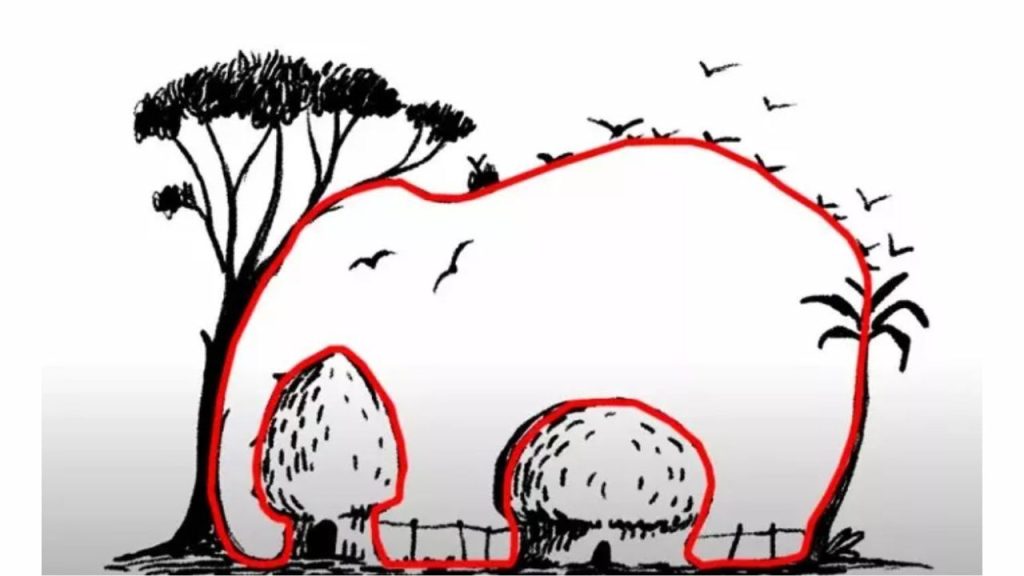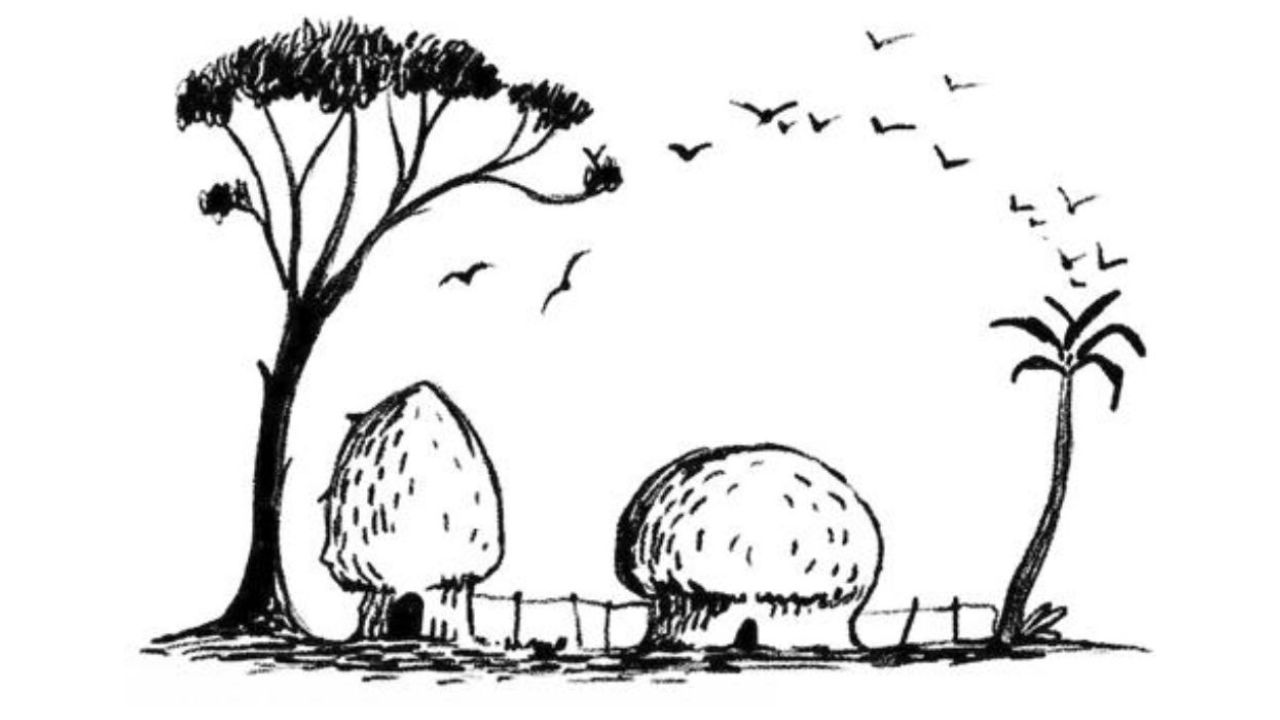What Makes Optical Illusions So Fascinating?
Optical illusions have captivated human minds for centuries, creating a bridge between art and science. These visual puzzles trick our brains into seeing things that aren’t quite there or missing obvious details hiding in plain sight.
The human brain processes visual information at lightning speed, but sometimes this quick processing leads to interesting mistakes. Our minds try to make sense of complex images by filling in gaps and making assumptions based on past experiences.

The Science Behind Visual Perception
Scientists have studied how our eyes and brain work together to create the images we see. The process involves light entering our eyes, hitting the retina, and sending signals to our brain for interpretation.
Sometimes, the brain receives conflicting information and must choose which interpretation to believe. This creates the perfect conditions for optical illusions to work their magic on our perception.
Why Hidden Object Tests Boost Your IQ
Hidden object puzzles aren’t just entertaining games – they’re serious brain training exercises. Regular practice with these visual challenges can improve several cognitive functions simultaneously.
These puzzles enhance your attention to detail, spatial reasoning, and pattern recognition skills. People who regularly solve visual puzzles often show improved performance on various intelligence tests.
The Psychology of Pattern Recognition
How Our Brains Process Complex Images
When you look at a busy image, your brain doesn’t process every detail equally. Instead, it focuses on familiar shapes, contrasts, and patterns that seem most important.
This selective attention helps us navigate daily life efficiently, but it can work against us in optical illusion tests. The hidden elephant might be camouflaged within patterns that your brain dismisses as background noise.
Training Your Visual Intelligence
Visual intelligence involves more than just having good eyesight. It requires the ability to analyze, interpret, and understand complex visual information quickly and accurately.
Professional fields like medicine, engineering, and design rely heavily on visual intelligence skills. Radiologists, for example, must spot tiny abnormalities in medical scans that untrained eyes would completely miss.
Strategies for Solving Hidden Object Puzzles
The Systematic Scanning Method
Instead of randomly searching the image, try dividing it into sections and examining each area methodically. Start from one corner and work your way across the image in organized rows.
This approach prevents you from repeatedly looking at the same areas while missing others entirely. Systematic scanning increases your chances of finding hidden objects within the time limit.
Look for Unusual Shapes and Outlines
Hidden elephants are often disguised as parts of trees, rocks, or other natural elements. Train your eyes to spot unusual curves or shapes that don’t quite match their surroundings.
Pay special attention to areas where different textures or colors meet. These boundary regions often contain cleverly hidden objects that blend with multiple background elements.
Change Your Perspective
Sometimes stepping back from the image or viewing it from different angles reveals hidden elements. Distance can provide clarity when you’re too focused on small details.
Try squinting slightly or defocusing your eyes to see broader patterns. This technique often makes camouflaged objects more visible by reducing distracting details.
The 47-Second Challenge Explained
Why Time Limits Matter
The 47-second time limit isn’t arbitrary – it’s based on research about optimal problem-solving pressure. This timeframe creates enough urgency to engage your focused attention without causing panic.
Studies show that moderate time pressure can actually improve performance on visual tasks. Too much time allows overthinking, while too little time prevents thorough examination.
What Your Speed Reveals About Your Mind
Finding the hidden elephant quickly suggests strong pattern recognition abilities and excellent visual processing skills. These traits often correlate with higher scores on traditional IQ tests.
However, taking longer doesn’t necessarily indicate lower intelligence. Some people prefer careful, methodical approaches that ensure accuracy over speed.
Common Mistakes in Visual Puzzle Solving
The Tunnel Vision Trap
Many people focus too intensely on small sections of the image, missing the bigger picture. This tunnel vision approach often overlooks objects hidden in plain sight.
Remember that hidden elephants might be much larger or smaller than you expect. Don’t limit your search to elephant-sized shapes – look for any elephant-like features regardless of scale.
Overthinking Simple Solutions
Sometimes the hidden object is more obvious than you think. Overthinking can lead you to dismiss correct answers because they seem too easy or straightforward.
Trust your first instincts when something catches your eye. That brief moment of recognition might be your brain correctly identifying the hidden elephant before doubt sets in.
Benefits of Regular Optical Illusion Practice
Enhanced Cognitive Flexibility
Regular practice with optical illusions improves your brain’s ability to switch between different ways of seeing the same image. This cognitive flexibility benefits problem-solving in many areas of life.
People who regularly engage with visual puzzles often show improved creativity and innovative thinking. Their brains become more adaptable to new perspectives and unexpected solutions.
Improved Attention and Focus
Searching for hidden objects requires sustained concentration and careful attention to detail. These skills transfer to academic and professional tasks requiring focused attention.
Students who practice visual puzzles often show improvements in reading comprehension and mathematical problem-solving. The enhanced focus skills benefit virtually every learning activity.
The Hidden Elephant Challenge Solution

Finding the Camouflaged Creature
After examining the optical illusion carefully, you should focus your attention on the natural elements within the scene. The hidden elephant is cleverly integrated into the landscape, often appearing as part of rock formations, tree trunks, or mountainous terrain.
Look specifically for the characteristic shape of an elephant’s head, trunk, or distinctive ear outline. The artist has masterfully blended these recognizable features into the surrounding environment, making them visible once you know where to direct your gaze.
Why This Particular Illusion Works
This optical illusion succeeds because it exploits our brain’s tendency to see familiar patterns in nature. The elephant’s features are disguised using similar colors, textures, and shapes found in natural landscapes.
Once you spot the hidden elephant, you’ll wonder how you missed it initially. This “aha moment” demonstrates how our perception can shift dramatically with the right focus and attention.
Sharpening Your Visual Intelligence
Optical illusion challenges like the hidden elephant test offer more than simple entertainment. They provide valuable insights into how our minds process visual information and reveal areas where we can improve our cognitive abilities.
Whether you found the elephant in 47 seconds or needed more time, the important thing is engaging with these mental exercises regularly. Consistent practice with visual puzzles can enhance your problem-solving skills, attention to detail, and overall cognitive flexibility in ways that benefit many aspects of daily life.
